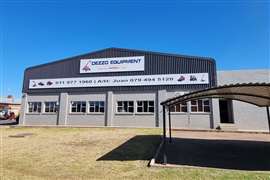Economic Outlook: Slow recovery in Europe
02 September 2014

The Euro zone’s economic recovery will remain gradual, with tensions in Ukraine and the Middle East adding uncertainty to an already difficult economic environment. Real GDP looks to be growing at only lacklustre rates this year.
Although there has been an improvement for Spain, there is weakness in Belgium and Italy. Even Germany is now showing only marginal gains, despite a strong first quarter. On the plus side, Euro zone unemployment has dipped slightly and employment and real wages are rising a little.
The Purchasing Managers’ Index (PMI) for manufacturing suggests that output growth has slowed and new order growth has stabilised. IHS Global Insight expects further depreciation of the Euro, which will improve manufacturing competitiveness.
On the other hand, the services PMI has climbed, reinforcing hopes that economic growth is gaining traction. Since European economies are typically more dependent upon services than manufacturing, this is good news for construction on balance. Low inflation suggests that the European Central Bank (ECB) can sit tight and wait for interest rate cuts and liquidity measures to take effect, although further easing is unlikely.
On balance Euro zone real GDP is expected to increase +1.0% in 2014, improving to +1.5% in 2015 and +1.6% in 2016 with better than expected prospects for Spain being offset by weaker prospects for Italy and France.
By contrast, the UK economy is performing well, with consumer spending and business fixed investment driving growth. While the manufacturing PMI confirmed a loss of momentum, the PMI for the dominant services sector showed buoyant growth for output, incoming new business and employment.
Importantly for construction, the business investment outlook is favourable, supported by companies’ healthy cash positions, improved profitability and easing credit conditions. Businesses are currently investing to improve productivity and develop new markets and products. Over time, there will be an increasing need to add capacity.
With this strength, the Bank of England is likely to raise interest rates in the coming months. Increases will be gradual, however, as the central bank gauges the impact of rising rates in an environment of high debt burdens and a strong currency. IHS Global Insight’s UK GDP outlook is for +3.1% growth this year, +2.8% in 2015 and +2.7% in 2016 – nearly twice the Euro zone performance.
Construction growth
Given this economic outlook, the view for Western Europe construction is one of improvement, but with anaemic growth. After years of contraction, total construction spending will expand +1.5% in 2014 and offer about +2.2% growth over the following three years.
Infrastructure spending provides most of the impetus, as the need for fiscal austerity diminishes and countries need to catch up on deferred projects. Turkey, Germany and the UK lead growth in this segment, but their growth rates are not much higher than in recent years. The real turnaround in infrastructure growth for the region is a return to marginal growth (or at least smaller declines) in Greece, Ireland, Portugal and Spain after the collapse seen in the crisis years.
While uninspiring in the early years of this forecast, the non-residential structures segment will go on to see the strongest growth with average annual increases of +2.3%, over the next five years. Over the same period, residential construction will grow at only +1.8%.
Germany (+3.9%) offers the best non-residential structures outlook in the near and medium terms, with most of its strength coming from the manufacturing sector, although Germany will also lead European growth in the commercial and institutional segments.
The UK (+3.8%) offers the second largest growth in non-residential structures and offers the strongest growth in Europe in the office sector. A further indication of the turnaround in Europe is Ireland, with the fifth highest growth (+3.0%), behind Sweden (+3.4%) and Turkey (+3.3%).
Turkey has become one of the more disappointing economies in Europe as political dysfunction has increased risk and decreased interest in capital expenditures, particularly from foreign investors.
Residential outlook
At +4.8%, the UK will be the leader as far as residential construction growth is concerned, followed by Turkey (+4.7%). Part of the UK growth is a price effect, but the country is also benefitting from housing policy decisions and sustained economic growth that encourages residential investment. While Turkey has become less attractive as an investment economy, it still offers Europe’s most attractive demographic profiles and improving personal incomes.
On the other hand, residential overhang remains in Spain, while fiscal policy and a lack of consumer confidence is dragging on residential construction in Greece and Portugal. All three will continue to contract in the near term, and even five years from now will have smaller residential construction sectors than they do today. While Ireland is improving in non-residential structures, it will take time for that to filter through to consumers, and it will also see further residential sector contraction.
Scandinavia will enjoy moderate growth in the +2% to +2.5% range, although Norway will be somewhat below the regional average. Austria, Switzerland and the Netherlands will realise total construction increases near +1.6%, while France will struggle along at just over +1% average growth.
The bleeding has nearly stopped in Spain, but Portugal, Greece and Italy will see significant further declines in construction spending in 2014 and 2015. Residential construction will be the weakest sector in these latter economies as unemployment remains high and fiscal policy favours taxation over economic stimulation.
The region has made progress with its fiscal and financial difficulties, and the construction outlook is more positive today than a year ago. Indeed, some economies, notably Germany and the UK, have thrown off the yoke of recession. Most of northern Europe will see growth to a lesser extent.
However, the outlook for Southern Europe remains poor. While the financial position of these economies is gradually improving, the necessary reforms to improve labour market competitiveness remain largely without action. Such an environment is not conducive to new investment. Europe is a more attractive market today, but it remains a decidedly mixed bag of opportunity.






